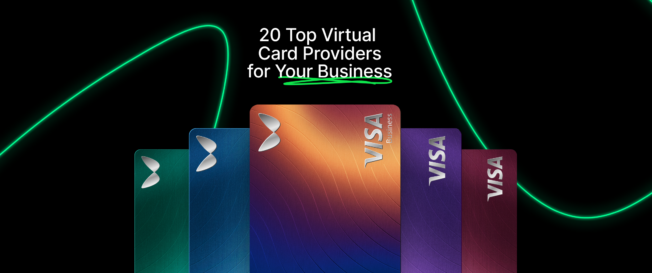Understanding the processes for depositing and making payments by cheque is key to smoothly managing business finances and transactions. This guide covers everything you need to know about incoming and outgoing cheque payments. It explains the clearing system’s mechanics, timelines for funds availability, and potential fees or issues associated with cheque transactions. Whether you need to pay in cheques received or make outgoing payments by cheque, this overview provides invaluable details to help manage your finances.
How to deposit a cheque
To pay in a cheque, you can simply present the printed cheque at any bank branch or use the app to take a picture for a remote deposit. Using the mobile app for depositing cheques is a convenient service that allows for quick processing. You’ll need to complete a paying-in slip or enter the payment details. Funds should appear in one or two working days once deposited, though foreign cheques can take longer. This is part of how we process cheques to ensure they’re deposited into your account efficiently. When depositing a cheque via mail, include a covering letter detailing the payment’s purpose and your account information for accurate processing.
Process of clearing a cheque
When a person pays in a cheque, it enters the clearing system to transfer funds from the payer’s account to your own. Clearing involves the following steps and conditions:
- The payer’s bank receives the cheque and checks if funds are available to pay it.
- If sufficient funds exist, the amount is deducted from the payer’s account.
- The funds are made available to your bank, which credits your account.
- After a cheque is deposited, the corresponding amount is withdrawn from the issuer’s account once cleared.
- The physical cheque is returned to the payer as a record of payment.
This process is typically completed within one or two working days. This is achieved through the Image Clearing System, which allows for faster processing by transmitting cheque images between banks.
Paying money into your account
Besides cheques, a person can also pay money into the account using:
- Cash – at a branch or via a deposit-taking ATM.
- Electronic bank transfers – via Faster Payments, BACS, or CHAPS.
- Standing orders – regular automatic transfers on fixed dates.
- Direct debits – regular payments taken by third parties per authorization.
Funds should appear promptly in the account once received by the bank. Each deposit method, whether cash, electronic transfer, or cheque, is represented on your bank statement differently.
Clearing cycle of your cheques
When you or any other person issues cheques to make payments from the account, the clearing cycle is:
- The recipient pays the cheque into their bank accounts.
- Their bank sends the cheque image to your bank via the Image Clearing System.
- Your bank debits the amount from your account up to the end of the next weekday, effectively withdrawn to complete the clearing process.
- They return the physical cheque to you as a payment record.
So recipients gain access to the funds in about one or two days, while the amount stays pending in your account briefly before being deducted. The clearing process for sterling cheques follows a standardized timeline, ensuring funds transfer efficiently within the UK banking system. The Image Clearing System has represented a significant advancement in speeding up cheque processing times.
Outside of the UK-issued cheques
Clearing times for foreign currency cheques or cheques issued outside the UK are typically 6 working days but can take considerably longer depending on the bank’s location. Contact your bank for time estimates. Additional fees may also apply for processing foreign cheques.
Cheques drawn on Scottish and Northern Irish banks
While cheques issued in England clear within 2 days, cheques drawn on Scottish and Northern Irish banks can take an additional day due to processing locations. Be aware of this potential delay for payments originating there.

How to make payments by cheque
Cheques allow flexible payments from your account as needed. You can issue cheques for any amount up to your account balance, or cash cheques written from other accounts.
Cheque cashing
To cash a cheque, visit any bank branch and present identification. Banks can choose to cash cheques drawn from other banks for a fee. Fund availability depends on the amount and the banker’s verification. Upon cashing a cheque, the bank will withdraw the amount from the issuer’s account immediately after verification. Banks have specific procedures to ensure cheques are processed efficiently, allowing for quicker funds availability. Besides, banks always verify the cheque is not a duplicate to prevent processing the same payment twice.
Stopping a cheque
If a cheque is lost or you wish to cancel payment, immediately inform your bank to stop the cheque. This prevents funds from being paid from your account. Stopping payment incurs a nominal fee. In cases where a stopped cheque was for a legitimate payment, requesting a replacement cheque is a common practice to ensure the payee receives their funds. A stop payment request must be made before the cheque is withdrawn to prevent the transaction. Requests to stop cheques are immediately processed by the bank to ensure no unwanted transactions occur.
Returned cheques and other items
There’s always the possibility of cheques being returned without being paid if the account lacks sufficient funds, is frozen or closed, or if the cheque is not signed or found to be fraudulent. Cheques might also get returned if they are reported stolen or lost, to protect the account holder from fraud. If a cheque is returned due to bank errors or discrepancies, issuing a replacement cheque may be necessary to complete the transaction.
Returned cheques are processed by the bank with a fee, highlighting the importance of ensuring account funds. Cheques may be returned unpaid if there isn’t enough money in the account, among other reasons. If a replacement cheque is necessary, it will be processed and ready for dispatch within two working days, ensuring minimal disruption to payment schedules.
Paid cheques
Once paid from your account and cleared, cheques cannot be canceled. Reconciliation of issued cheques against bank statements is key to spotting any potentially fraudulent cheques being paid.
Unpaid cheques
If some person presents you with a cheque that bounces due to insufficient funds, contact the payer requesting an alternate payment. For frequently bouncing cheques, consider ceasing business relations. To resolve situations involving unpaid cheques, especially in cases of bank errors, a replacement cheque can be issued to the intended recipient.
Out-of-date cheques
Cheques are valid for 6 months from the date written. Outdated cheques can still potentially be paid, but banks may return them without being paid. Reissuing is recommended if a cheque expires before being banked.
Further information
Contact your bank for any additional guidance on depositing or making cheque payments. Further support information is also available on bank websites regarding cheque processes. For more detailed procedures, refer to your bank’s guidance form available online or at branches.
Payment cut-off times
Cut-off times determine if payments will be processed the same day or the next working day. Cheque deposits made before branch closing time usually credit accounts the same day. For outgoing electronic payments, the cut-off is typically early afternoon. Verify exact timings with your bank. Payments initiated after the cut-off go into the next processing cycle.
Optimizing payment processes with Wallester
Efficiently managing payment cycles, including cheque deposits and outgoing transactions, requires more than traditional banking services. Wallester provides a comprehensive payment and expense management platform Wallester Business aimed at helping businesses improve financial operations. Whether handling outgoing transactions, tracking employee expenses, or optimizing cash flow, Wallester Business offers flexible and secure solutions tailored to modern financial needs.
Key features of Wallester Business
- Virtual and physical cards. Instantly issue unlimited virtual and physical Visa cards for employees, departments, or project-based spending, providing controlled and trackable transactions.
- Real-time expense tracking. Monitor transactions as they happen, reducing delays and improving financial oversight.
- Automated reconciliation. Integrated reporting tools simplify accounting by automatically categorizing expenses and syncing with financial software.
- Customizable spending limits. Set individual card limits, restrict spending categories, and make sure that payments comply with company policies.
- Multi-currency support. Make payments in multiple currencies without hidden exchange rate fees, making it ideal for international business transactions.
- Smooth integration. Sync with accounting platforms, reducing manual data entry and minimizing errors.
- Security and fraud prevention. Built-in security features, including real-time fraud monitoring, instant card freezing, and strong authentication protocols, protect businesses from unauthorized transactions.
Wallester Business is created for companies that need efficiency, control, and transparency in their financial operations. By eliminating manual processes, automating reporting, and providing instant access to spending insights, businesses can save time, reduce costs, and optimize cash flow with ease.


